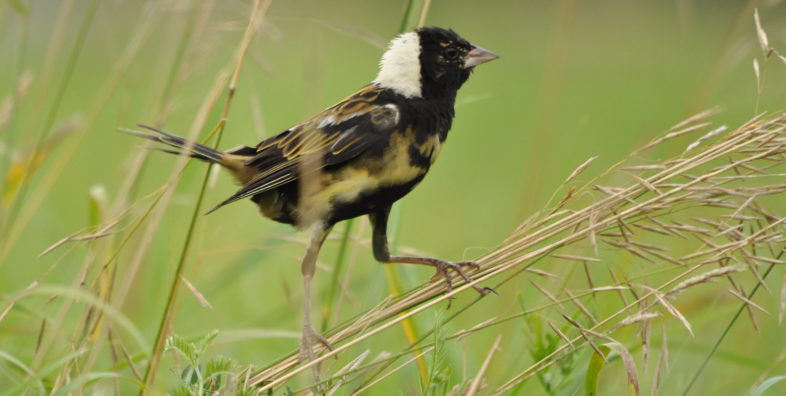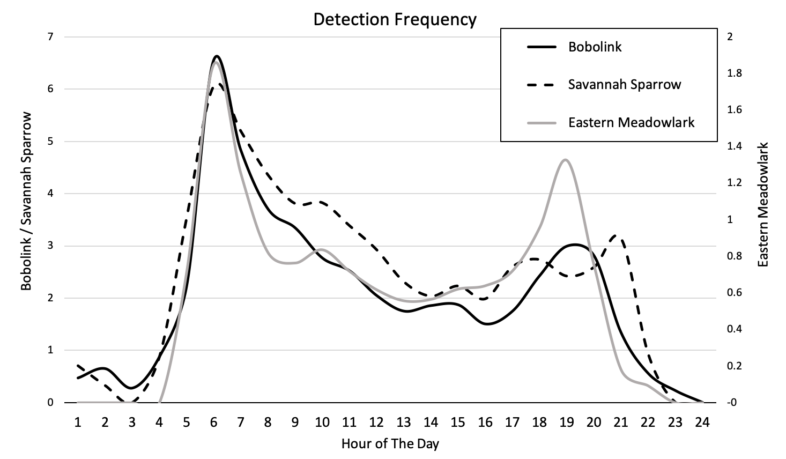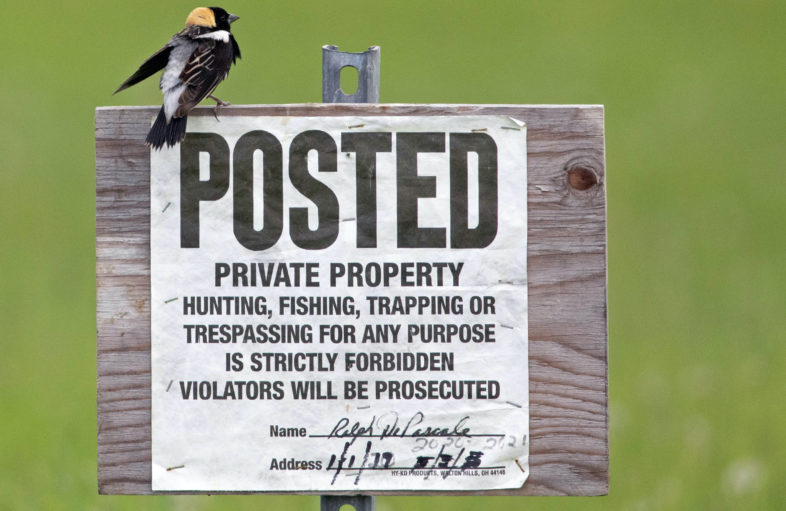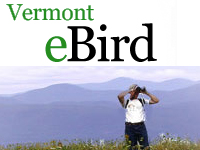Annual monitoring of known grassland bird breeding sites is the first line of defense against population loss. By knowing which sites are productive and facilitating dispersal, and which sites are lost or hayed, it allows conservation efforts to adapt accordingly.
Please email to learn more!

A molting male Bobolink in Westminster, VT © Putneypics.

Detection frequency (% of checklists submitted with a given species included) of Bobolink (black), Savannah Sparrow (black dashed), and Eastern Meadowlark (gray) in Vermont. eBird.
Survey each site thrice during the breeding season (May 15 – late July), each time approximately one month apart. The sooner after sunrise the better but surveys should occur between 5:00 and 9:00 AM, while the birds are most active. Secondary surveys may also be done in the evening. Only survey in fair conditions; no precipitation with low winds.

A male Bobolink reminding you to stay out of posted fields! © Marv Elliot
Thanks to eBird, anyone can contribute to community science and conservation with ease. We suggest following one of two survey methodologies: area surveys (when you have permission to enter a field) or road-side surveys.
Area surveys are done by walking through a field and spot-mapping birds to track their movements and territories. However, care must be taken to avoid stepping on nests. Road-side surveys are done from field edges, such as roads or trails, without entering the fields.
Breeding behavior, such as carrying food or nesting materials, may be difficult to observe while a bird is aware that you’re present. Once you identify the general territory of a bird, step back around 100 feet (or more if necessary) and crouch in the grass while watching the area. This may prompt the bird to return to the nest and resume care. From there it becomes a waiting game
Record the birds you observe, along with Breeding Codes if breeding behavior is observed to Vermont eBird. Additionally, in the checklist comments please note where the bird was observed (ex: Heard singing north of the road), and if surrounding fields have been hayed (ex. field to north hayed, southern field not).
Do not venture onto private property without expressed permission from the landowner.

